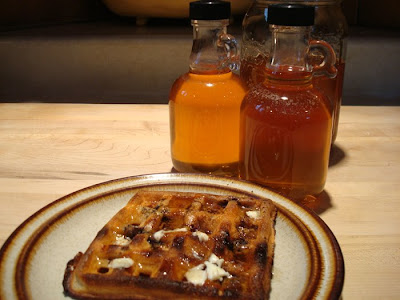 Spring roll lettuce wrap for two
Spring roll lettuce wrap for two
When I make
spring rolls I will usually double the recipe and stash them away in the freezer. Later in the season when I'm lost in the garden, these spring rolls are a god send.
When the garden is overflowing with salad greens and herbs, is the time to do the Wrap. Decoratively arrange a large platter of your favorite salad vegetables. Mine usually includes some or all of these:
Leaf lettuce
Sprigs of cilantro
Mint leaves
Bean sprouts
Cucumbers, sliced into thin half moons
Thin slices of raw onion
Cherry tomatoes, cut in half or quarters
Cooked rice noodles
Cooked
Spring rolls, cut in half or bite size pieces, with kitchen scissors
Spicy Fish Sauce

At the table take a leaf of lettuce and fill it with a couple of cilantro leaves, one or two mint leaves, five or six bean sprouts, cucumber and onion slices, a piece of tomato, a few strands of noodles and a piece of spring roll. The idea is to add a little of everything but keep the bundle small enough to eat in one huge bite.
 Wrap lettuce tightly around the whole bundle.
Wrap lettuce tightly around the whole bundle.
Lean over your plate as you take a bite for this is not an elegant meal...it'll be messy...but dig in, eat with your fingers, play with your food.
Kitchen tips:
- Bake frozen spring rolls in a preheated 450 F oven for 30 minutes, turning once, until brown and crunchy.
- If you don't happen to have
spring rolls lying around, you can wrap with pieces of cooked fish, chicken or beef.
-
Spicy fish sauce, in a jar, will keep almost indefinitely in the refrigerator. It can be whatever you need it to be, a condiment, a salad dressing or a dipping sauce.
 I cover the newly seeded beds with row covers to help germination and to keep garden critters out. Then I sit back and let rain do its thing.
I cover the newly seeded beds with row covers to help germination and to keep garden critters out. Then I sit back and let rain do its thing.  I cover the newly seeded beds with row covers to help germination and to keep garden critters out. Then I sit back and let rain do its thing.
I cover the newly seeded beds with row covers to help germination and to keep garden critters out. Then I sit back and let rain do its thing.  Garlic planted last fall
Garlic planted last fall 

























